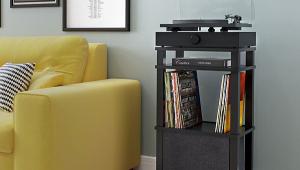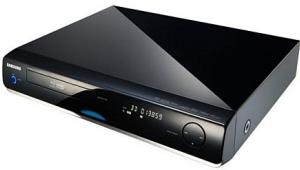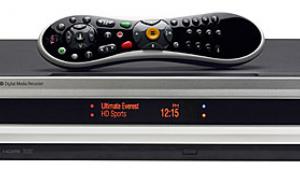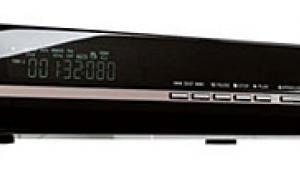Samsung BD-P2500 Blu-ray Player Page 2
Blu-ray/DVD Video Testing
The BD-P2500 is one of only a few Blu-ray players on the market that uses a standalone video-processing chip alongside its HD decoder chip. Most players depend on their decoder to do video processing for both Blu-ray and DVD playback. Since most Blu-ray Discs are authored as 1080p/24, video processing for this content is largely unnecessary. But DVD playback at 1080p is a bit more complicated since the DVD information needs to be deinterlaced and upconverted. Several Blu-ray Discs are also mastered at 1080i, including some feature films and concert releases. Because of this, the need for high-quality HD deinterlacing becomes important.
The Reon video-processing chip is becoming a popular option in the A/V market. I’ve seen several A/V receivers and surround processors that implement this chip for their onboard video processing, and more and more displays and projectors use the chip as well. The Reon is at the lower end of Silicon Optix’s HQV solutions, which include the flagship Realta. The Reon’s core processing capabilities are essentially identical to the Realta’s in terms of deinterlacing with HD material. While the Realta has some features that are essential to processing cable broadcast feeds, it has little impact on most Blu-ray playback. The Reon is also limited to SD noise-reduction functions, whereas the Realta can do full noise reduction for both HD and SD material.
As you can see from our video-processing test results, the BD-P2500 does an exceptional job with both HD and SD video processing. The inclusion of the Reon video-processing chip makes this a very capable player with outstanding deinterlacing and scaling performance, which allows superlative 1080p playback from DVD discs. Unfortunately, the BD-P2500 does not offer frame-rate conversion of DVD material like the recently reviewed Panasonic DMP-BD35 and DMP-BD55. Those players allow for 1080p/24 playback of DVD material. The BD-P2500 is limited to 1080p/60 on DVDs, which is typical of most Blu-ray players. This one simply does it better than most.

The HD decoder does have an issue with chroma upsampling with HD material mastered with a 2:2 cadence (not shown in our chart). This content represents a tiny segment of the market, but the player revealed obvious banding with our 2:2 Chroma Upsampling Error (CUE) test pattern. The player didn’t show any signs of chroma error with DVD material or the more common 3:2 cadence with HD material.
SD video scaling was excellent across the board with both luma and chroma test signals. The Reon showed a minimal amount of ringing from its scaling engine, and it resolved the full resolution of test-pattern material with no signs of smearing or interference patterns. I would put this player in line with the best Blu-ray players for DVD playback on the market today.
With straight 1080p/24 playback from Blu-ray Discs, the BD-P2500 did an exceptional job. The player resolved the full resolution of the format and showed impressive chroma resolution with our zone plate patterns. Blu-ray images were razor sharp and delivered every drop of detail from the format.
 In Use
In Use
Without a doubt, the most inconsistent aspects of Blu-ray player performance today are loading speed and general usability. Blu-ray is a next-generation experience in terms of its performance and interactivity, but those same features have led to painfully slow disc load times and player power-up times. Consumers who make the upgrade from DVD probably don’t expect a slower experience than what they have with their cheap DVD players, but that’s what they’re getting with most Blu-ray players.
In the September issue, I reviewed the Samsung BD-P1500, which was one of the fastest standalone BD players I’ve tested. The BD-P1500’s load times were close to the popular PlayStation 3’s load times with most titles, and it was quite a step up from most of the players I’d reviewed by that time. Last month when I reviewed the LG BD300, it raised the bar for disc loading times and player startup. It even beat the PS3 in most of my tests. Since the BD-P2500 is so similar to the BD300, I was curious to see if that same level of speed was there. Unfortunately, it wasn’t. The BD-P2500 isn’t a sluggish player, but I would call it average for the market today. It was a tad slower than the recent Panasonic players that I reviewed, but it was a nice step up from the Pioneer and Sony units I’ve looked at recently. The BD-P1500 still remains the speed king for Samsung and was a bit faster than this model. However, the BD-P2500 does feature a Fast Turn-On feature. The player will turn on faster if you press the Eject button instead of Power when you initially power on the player. When I used this method, I got the disc tray to come out in about 4 seconds, which is very fast. Unfortunately, that’s all it does. It still took about half a minute to get a picture on the screen. And it took about the same time before the Samsung let me shut the disc tray and start loading the disc. In comparison, the LG player could eject its tray, load a disc, and start playing in the time it took the Samsung to start loading a disc. That’s a big difference when you consider that you’ll still have to load the BD-Java authored menus and everything else that are on most Blu-ray Discs these days.
I had Sony’s newest flagship BDP-S5000ES player on hand as well during this review, and the Samsung loaded discs a lot faster than the Sony. While some of the more BD-Java-intensive discs were a bit sluggish, most discs loaded without much of a wait. Load times were between about 30 seconds and a minute with the majority of the discs I tried with the player.
The BD-P2500’s user interface is simple to navigate and nicely arranged within the setup menus. It has selections for video output, including 24p support and audio. The BD-P2500 gives you the option of what it calls audiophile bitstream output, which allows you to take advantage of your AVR’s or surround processor’s advanced audio decoding for Dolby TrueHD and DTS-HD Master Audio. But keep in mind that you won’t be able to take advantage of the disc menu’s sound effects or secondary audio streams from picture-in-picture features. If you have the player decode lossless soundtracks to PCM, you can take advantage of these features. But when you do this with the BD-P2500, you lose the ability to listen to the full resolution of DTS-HD High Resolution and Master Audio soundtracks (unless and until the reported firmware update for decoding these formats in the player is released). For now, the player will only decode the core 1.5-Mbps DTS soundtrack, which is similar to the DTS soundtracks on DVD today. [Actually, at 1.5 Mbps, the DTS core track is twice the data rate of DTS on many DVDs.—TJN]
The BD-P2500 also offers a bitstream re-encode feature, which is becoming popular with Blu-ray players. The player decodes the primary and secondary audio soundtracks on the Blu-ray Disc (the same limitations I referred to above apply for DTS-HD soundtracks) to PCM then re-encodes them as a 1.5-Mbps DTS bitstream. Since DTS at 1.5 Mbps is a higher bitrate than Dolby Digital is capable of, this provides an attractive audio solution to users who are limited to legacy TosLink connections.
The BD-P2500’s remote was a bit disappointing. The button layout isn’t very user friendly. It isn’t backlit, so operation in the dark is frustrating. The menu keys are also annoying, as the key used for title menus varies depending on whether you’re using the player for DVD or Blu-ray playback. A good remote uses the same Title Menu button for both formats and uses the simple Menu button for pop-up menus or one-back menus on DVD. The remote is quite responsive though, and I didn’t notice any annoying lag between remote commands and player operation.
Conclusion
Samsung has delivered a solid performance package with the BD-P2500. It’s great to see the company bring HQV processing back to its player, and the benefits were clearly apparent with DVD and Netflix playback. While there’s still room for improvement with its load times and DTS lossless audio, the BD-P2500 represents one of the more sound investments in the Blu-ray format at this price point.






























































